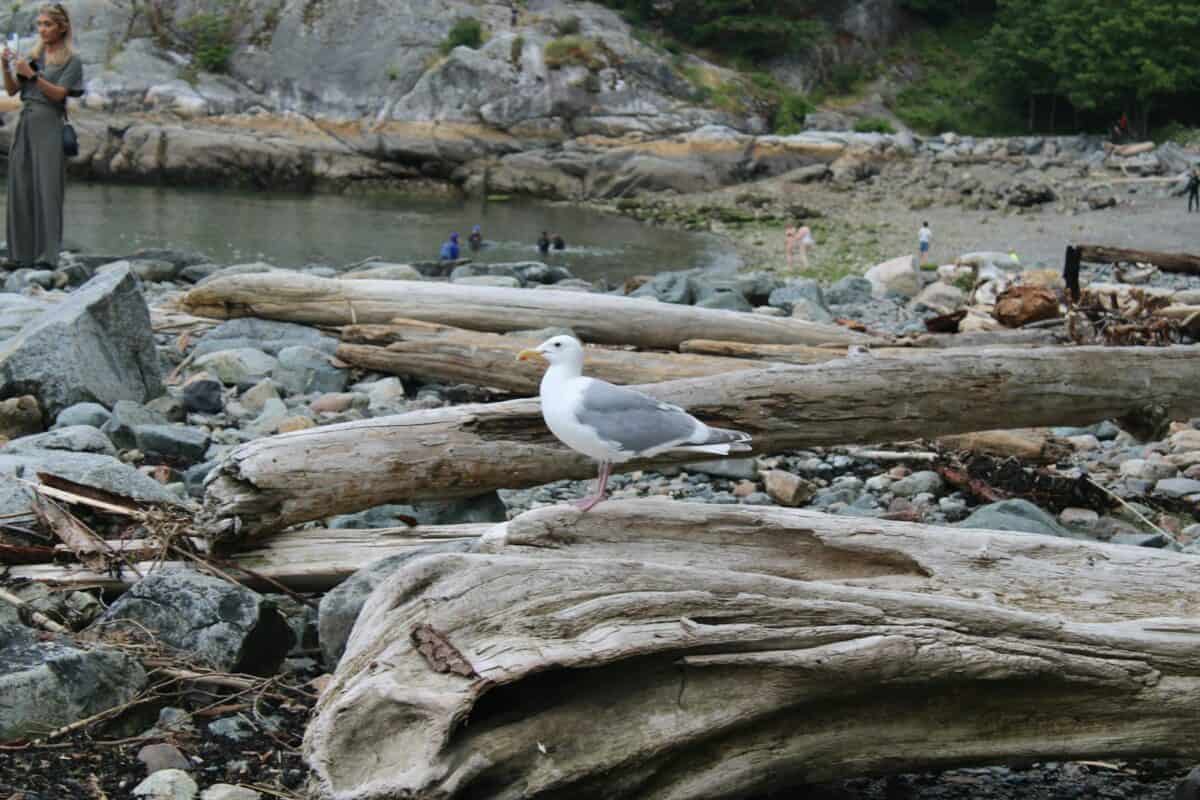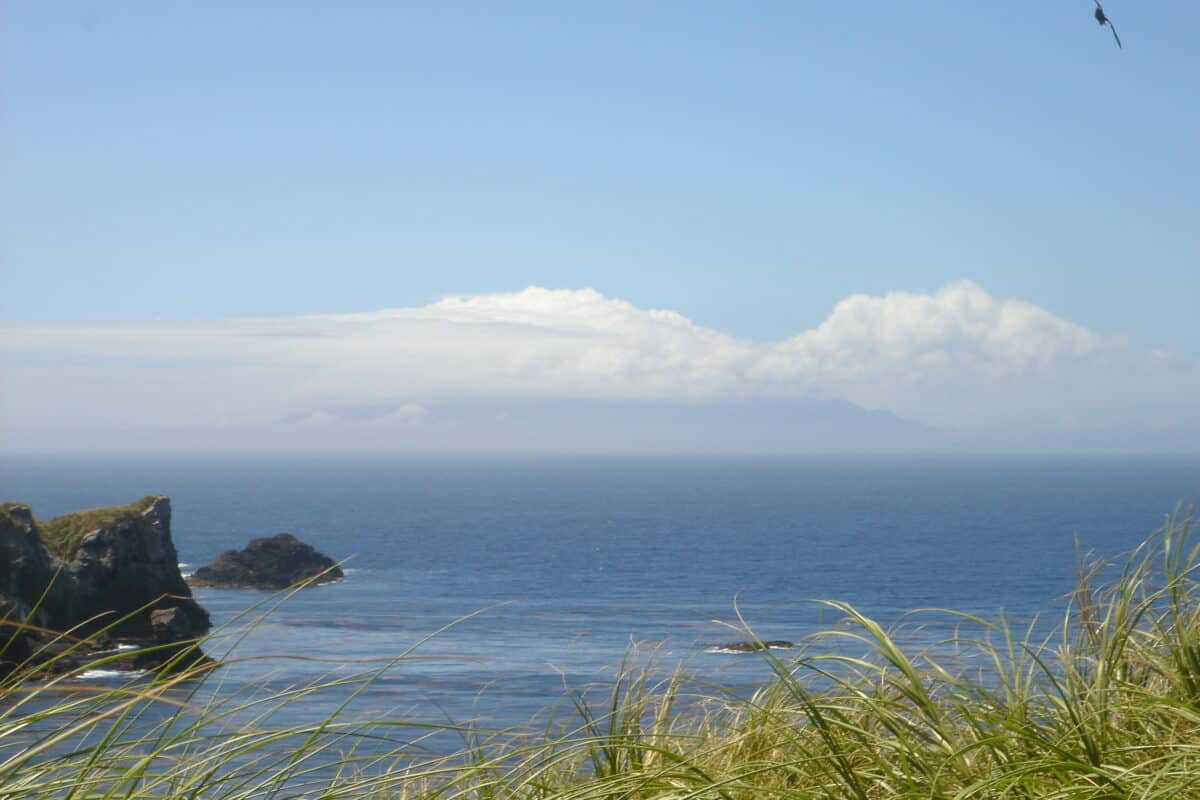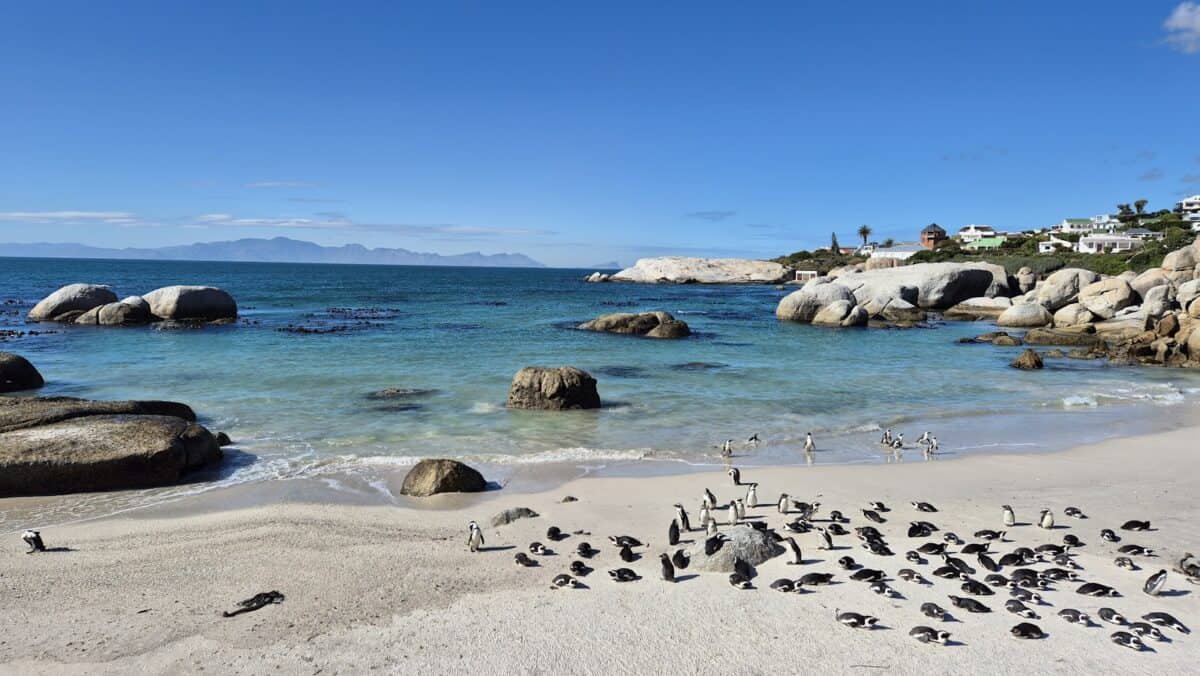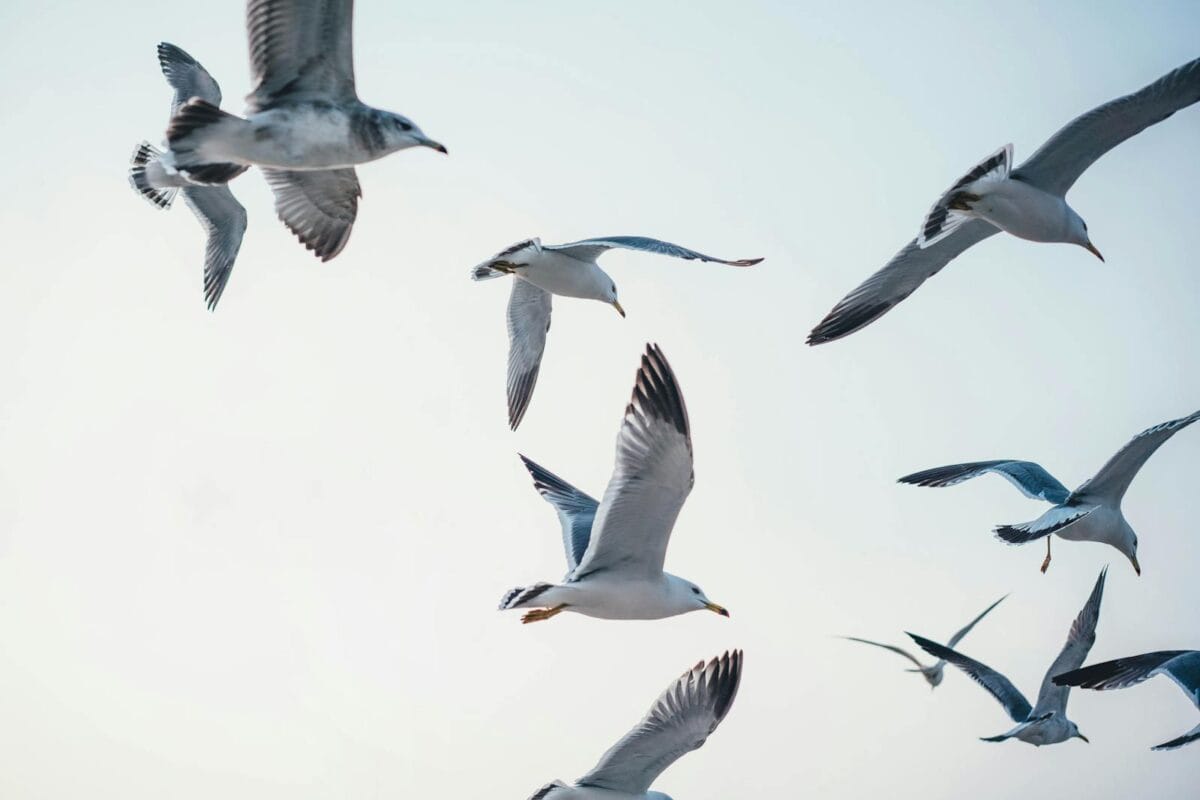Hidden away in the South Atlantic Ocean lies an extraordinary ecological treasure that few have heard of and even fewer have visited. Gough Island, a remote volcanic landmass, hosts what scientists have confirmed to be the world’s largest seabird colony—a breathtaking congregation of millions of birds representing dozens of species. Despite its ecological significance, this island remains largely forgotten by the wider world, its feathered inhabitants continuing their ancient cycles of breeding and migration far from human eyes. The remarkable density and diversity of seabirds on this isolated outcrop make it not just a biological wonder but also a critical conservation priority in an era of increasing environmental challenges. This is the story of an island where the sky darkens with wings and the air fills with the calls of countless seabirds—a true avian metropolis in one of Earth’s most remote locations.
The Geographic Isolation of Gough Island

Situated approximately 1,700 miles west of Cape Town, South Africa, Gough Island stands as one of the most isolated places on Earth. Part of the British Overseas Territory of Tristan da Cunha, this rugged volcanic island measures just 91 square kilometers (35 square miles). Rising dramatically from the South Atlantic with steep cliffs and reaching heights of 910 meters (2,985 feet) at Edinburgh Peak, the island’s extreme remoteness has been both its blessing and challenge. No commercial flights reach Gough, and visitors are limited to researchers and occasional supply ships that make the treacherous journey. This isolation has preserved Gough as one of the least disturbed major cool-temperate island ecosystems in the world, earning it UNESCO World Heritage Site status in 1995. The island’s unique position in the path of the Roaring Forties—powerful westerly winds—creates a distinctively harsh climate of strong winds, frequent precipitation, and moderate temperatures that, paradoxically, provides ideal conditions for the millions of seabirds that call it home.
The Staggering Numbers: A Census of Wings

The sheer scale of Gough Island’s seabird population is almost incomprehensible. Scientists estimate that over 8 million seabirds breed on this small island, making it the most important seabird colony in the world. During peak breeding seasons, the density reaches astonishing levels—some areas host more than 1,000 breeding pairs per hectare. The island serves as home to 24 bird species, with an estimated 3 million pairs of Atlantic petrels, representing 99% of this species’ global population. Additionally, Gough hosts approximately 700,000 pairs of great shearwaters, 2 million pairs of broad-billed prions, and significant populations of Atlantic yellow-nosed albatrosses, Tristan albatrosses, and sooty albatrosses. The Northern rockhopper penguin, with approximately 32,000 pairs on Gough, adds to this remarkable avian diversity. These numbers not only make Gough a biological marvel but also underscore its critical importance for global seabird conservation, as many of these species face threats throughout their range and rely on this island sanctuary for their survival.
Evolutionary Marvel: Endemic Species of Gough

Gough Island’s extreme isolation has created a natural laboratory for evolution, resulting in several unique species found nowhere else on Earth. The Gough moorhen (Gallinula comeri) evolved from ancestors that somehow made the incredible journey to this remote outpost, developing into a distinct flightless species adapted to the island’s environment. Similarly, the Gough bunting (Rowettia goughensis) represents evolution in action—this endemic finch has adapted to fill ecological niches that would be occupied by multiple species on continents. The island’s isolation has also led to distinctive subspecies, including the Gough Island subspecies of the Northern rockhopper penguin, which shows subtle differences from populations elsewhere. Marine life surrounding the island has likewise evolved uniquely, with endemic invertebrates and distinctive subpopulations of seals. These endemic species represent irreplaceable evolutionary heritage, their unique adaptations the result of thousands of years of isolation. The island essentially functions as an evolutionary time capsule, preserving biological processes and adaptations that illuminate our understanding of how species develop in isolation.
A Day in the Life: The Rhythms of Seabird Existence

Life on Gough Island follows ancient rhythms dictated by ocean conditions, weather patterns, and breeding cycles that have remained largely unchanged for millennia. Dawn breaks with a cacophony as millions of birds return from nighttime feeding at sea or prepare to depart. The air fills with a symphony of calls—the haunting wails of petrels, the braying of penguins, and the distinctive cries of albatrosses. Different species occupy various ecological niches on the island: penguins colonize lower rocky areas with access to the sea, while burrowing petrels honeycomb the soil with their nesting tunnels across vast areas of the interior. Albatrosses claim exposed ridgelines where they can easily take flight on the persistent winds. Throughout the day, a constant stream of birds moves between land and sea—parents taking turns incubating eggs or feeding chicks, with some species making astonishingly long foraging trips that can span hundreds or even thousands of miles. As darkness falls, nocturnal species become active, with petrels navigating by starlight to find their burrows. This daily rhythm varies seasonally, with different species timing their breeding cycles to take advantage of optimal conditions, creating a year-round spectacle of avian abundance that few humans have witnessed.
The Mouse Invasion: An Ecological Catastrophe

Despite its remoteness, Gough Island faces a devastating ecological crisis stemming from an unintended human introduction. House mice, accidentally brought to the island by 19th-century sailors, have evolved into “super mice” significantly larger than their mainland counterparts. In a shocking adaptation that stunned scientists, these mice have become active predators of seabird chicks, attacking in groups and literally eating the young birds alive. This behavior, first documented in the early 2000s, has caused catastrophic breeding failures. The Tristan albatross, which produces just one egg every two years, has been particularly hard-hit, with fewer than 10% of chicks surviving to fledging in some years due to mouse predation. Studies indicate that mice kill an estimated 2 million seabird chicks and eggs annually on Gough, pushing several species toward extinction. The Atlantic petrel, already vulnerable, loses over 60% of its chicks to mice. This crisis demonstrates the devastating impact that introduced species can have on isolated ecosystems with no evolutionary defenses against such predators. Without intervention, models suggest multiple seabird species breeding on Gough could become extinct within decades, making this one of the most urgent conservation crises in the seabird world.
Conservation Efforts: The Race to Save Gough’s Birds

Recognizing the existential threat to Gough Island’s unique ecosystem, an international coalition led by the Royal Society for the Protection of Birds (RSPB) and Tristan da Cunha government launched an ambitious conservation effort. The centerpiece of this initiative has been the Gough Island Restoration Programme, which undertook one of the most logistically challenging island restoration projects ever attempted. After years of planning, in 2021, conservation teams executed a comprehensive mouse eradication operation, using specially formulated rodenticide bait spread across every part of the island. This £9 million project required overcoming extraordinary logistical hurdles, including establishing a temporary base on the remote island and working through harsh winter conditions. Concurrent conservation efforts include detailed monitoring of seabird populations, captive management of certain species during the eradication to ensure their safety, and habitat restoration initiatives. While it will take several breeding seasons to confirm complete success, early indicators suggest the operation may have successfully eliminated mice from the island. If successful, this project will represent one of the most significant conservation achievements in recent history, potentially saving multiple species from extinction and allowing the world’s largest seabird colony to recover to its former abundance.
Ocean Wanderers: The Remarkable Lives of Albatrosses

Among Gough Island’s most charismatic residents are its albatrosses—three species of these ocean wanderers breed here in significant numbers. The critically endangered Tristan albatross, with fewer than 2,000 breeding pairs remaining worldwide, depends almost entirely on Gough for its survival. These magnificent birds represent the pinnacle of oceanic adaptation, with wingspans exceeding three meters that allow them to harness the powerful Southern Ocean winds and travel thousands of miles with minimal energy expenditure. Albatrosses form lifelong pair bonds, reuniting at the same nest site year after year after spending months soaring over the open ocean. Their breeding cycle spans more than a year, with parents taking turns making epic foraging journeys while their partner incubates the single egg or guards the growing chick. Satellite tracking has revealed the astonishing scope of these journeys—individual Tristan albatrosses have been recorded circling the entire Southern Hemisphere during a single foraging trip, traveling over 15,000 kilometers before returning to their nest on Gough. This remarkable lifestyle makes albatrosses particularly vulnerable to human threats, from longline fishing hooks that catch and drown them to plastic pollution they mistake for food. The fate of these majestic birds is inextricably linked to the conservation of their crucial breeding sanctuary on Gough Island.
The Burrowers Below: Petrels and Shearwaters

While albatrosses may be the most visible residents of Gough Island, the true numerical dominance belongs to the burrowing petrels and shearwaters that transform much of the island’s soil into a subterranean labyrinth of nesting tunnels. These seabirds—including Atlantic petrels, great shearwaters, broad-billed prions, and soft-plumaged petrels—dig extensive burrows where they lay their eggs protected from weather and, historically, from predators. The cumulative effect of millions of these birds has literally shaped the island’s topography and soil composition over millennia. At night, the air above Gough fills with the eerie calls of returning petrels, creating what early explorers described as a “ghostly symphony.” These birds have developed remarkable adaptations for their dual lifestyle between ocean and land. Many can detect their specific burrow among thousands of seemingly identical holes across the landscape, using a combination of olfactory navigation and spatial memory. Their chicks develop slowly, protected underground for months while parents make long-distance foraging trips to productive areas of ocean, returning with stomachs full of partially digested fish, squid, and krill to feed their growing offspring. This nesting strategy made these species particularly vulnerable to introduced mice, which can easily enter their burrows and attack eggs, chicks, and sometimes even adult birds. The recovery of these burrowing seabird populations represents one of the greatest potential ecological benefits of successful mouse eradication.
The Scientific Significance: Research on the Edge

Beyond its conservation importance, Gough Island serves as an invaluable scientific research site, offering insights across multiple disciplines. Since 1956, South Africa has maintained a small meteorological station on the island, providing crucial weather data from this data-sparse region of the Southern Ocean that helps improve global climate models. Biologists conduct regular expeditions to study the island’s unique ecosystem, with seabird research particularly prominent. Long-term monitoring programs track population trends, breeding success, and feeding ecology of multiple species, creating one of the most comprehensive seabird datasets in the Southern Hemisphere. These studies have revealed alarming population declines in several species, helping trigger conservation responses. Marine biologists study the productive waters surrounding Gough, which support not only seabirds but also fur seals, elephant seals, and diverse fish populations. The island also offers geologists an opportunity to study the volcanic processes that created it approximately 40 million years ago. Perhaps most significantly, Gough represents one of the few remaining places to study relatively intact island ecosystems, providing a baseline for understanding how such environments function with minimal human disturbance. The scientific knowledge gained from this living laboratory continues to inform conservation efforts worldwide and deepens our understanding of island ecology.
Human History: Early Encounters and Modern Presence

Despite its extreme isolation, Gough Island has a fascinating, if limited, human history. Portuguese explorer Gonçalo Álvares is credited with first discovering the island in 1505, though it was initially named after English captain Charles Gough who rediscovered it in 1731. For centuries thereafter, Gough primarily served as an occasional stopover for whalers and sealers, who exploited the island’s abundant marine mammal populations but established no permanent settlement. Several shipwrecks occurred on its treacherous shores, forcing survivors to endure harrowing waits for rescue. A more consistent human presence began in 1956 when South Africa established a meteorological station that continues to operate today. This facility, staffed by a small team of 6-8 scientists and support personnel who serve year-long rotations, represents the only permanent human settlement on the island. These isolated teams experience extreme isolation, with supply ships visiting only a few times each year. In recent decades, scientific expeditions have increased, particularly those focused on conservation efforts. Despite this minimal human footprint, the accidental introduction of mice demonstrates how even limited contact has had profound ecological consequences. Today, strict biosecurity protocols aim to prevent further introductions as conservation teams work to restore the island’s natural balance while maintaining the scientific research that makes Gough an important monitoring site for Southern Ocean conditions.
Climate Vulnerability: Seabirds as Ocean Sentinels

The massive seabird colonies of Gough Island function as sensitive indicators of broader oceanic health and climate change impacts. As top predators that range across vast areas of ocean, seabirds integrate and reflect changes occurring throughout marine ecosystems. Researchers have documented concerning shifts in breeding timing, success rates, and population trends that correlate with changing ocean conditions. Rising sea temperatures alter the distribution and abundance of the fish, squid, and krill that seabirds depend on, sometimes forcing birds to travel farther to find adequate food for their chicks. This can lead to reduced breeding success and eventual population declines. Studies on Gough’s great shearwaters have shown changes in their trans-equatorial migration patterns in response to shifting marine productivity zones. The island’s albatrosses face particular challenges as climate models predict intensification of storms in the Southern Ocean, potentially affecting their ability to forage efficiently during critical breeding periods. Sea level rise threatens to inundate some low-lying coastal breeding areas, particularly for penguins. Additionally, changing precipitation patterns could impact the soil conditions needed by burrowing petrels. The seabirds of Gough thus serve as early warning systems for oceanic changes, their collective responses providing valuable data about climate impacts on marine systems far from direct human observation. Protecting these birds and monitoring their populations gives scientists crucial insights into how climate change is affecting remote ocean regions.
Future Prospects: What Lies Ahead for the World’s Greatest Seabird Colony

The future of Gough Island’s extraordinary seabird metropolis stands at a critical juncture. If the mouse eradication effort proves successful—something that will take several years to fully confirm—it represents a potential turning point in the ecological trajectory of the island. Scientists project that without the crushing predation pressure from mice, vulnerable seabird populations could begin recovering within a decade, with some models suggesting that numbers of certain species might eventually double or triple from their current depressed levels. However, significant challenges remain even with mice removed. Climate change threatens to disrupt the oceanic food webs these birds depend on, while commercial fishing activities throughout their vast foraging ranges continue to pose risks of bycatch mortality. Plastic pollution increasingly impacts seabirds worldwide, with remote colonies not immune to its effects. Conservation authorities are developing long-term management plans that include enhanced biosecurity measures to prevent new invasive species introductions, continued monitoring of recovering bird populations, and potential habitat restoration initiatives. International cooperation will be essential, as many seabird species that breed on Gough traverse waters under multiple national jurisdictions during their oceanic wanderings. With appropriate protection and management, there is cautious optimism that this ecological treasure—the greatest gathering of seabirds on Earth—can not only survive but thrive in the coming decades, continuing to fill the skies above this forgotten island with millions of wings as it has for countless generations.
Conclusion: A Natural Wonder Worth Remembering

Gough Island may remain physically inaccessible to most of humanity, but its significance transcends its remote location to claim importance on a global scale. As home to the world’s largest seabird colony, this forgotten island represents an ecological superlative that deserves wider recognition and protection.
- How Do Animals Find Their Way Home Without GPS? - August 20, 2025
- Why Some Animals Can Live for Hundreds of Years - August 20, 2025
- The Most Mysterious Shark Species Ever Spotted Near US Shores - August 20, 2025

